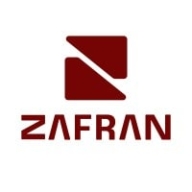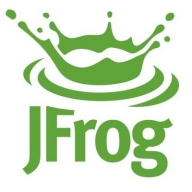


JFrog Xray and Microsoft Defender for Cloud are cybersecurity solutions that focus on vulnerability detection and mitigation. JFrog Xray holds a cost advantage and better support, while Microsoft Defender for Cloud is more feature-rich, making it a pricier option.
Features: JFrog Xray integrates with multiple CI/CD pipelines and offers deep inspection of binaries, crucial for development processes. It supports a wide range of package technologies and provides comprehensive binary management. Microsoft Defender for Cloud boasts seamless integration with Azure and other Microsoft services, broad threat protection, and a high level of visibility across the Microsoft ecosystem.
Room for Improvement: JFrog Xray could enhance its cloud-native security features to better handle specific cloud environments. Additionally, improvements in its dashboard visualizations would be beneficial. Microsoft Defender for Cloud could simplify its initial setup process and improve cost-effectiveness for smaller enterprises. More granular control over individual security alerts would enhance its flexibility.
Ease of Deployment and Customer Service: JFrog Xray is noted for an easy deployment process tailored for DevOps practices and responsive customer support. Microsoft Defender for Cloud offers comprehensive Azure integration but can require more initial configuration. However, it provides extensive support resources to assist with deployment challenges.
Pricing and ROI: JFrog Xray offers lower setup costs, making it a cost-effective choice focused on binary management and vulnerability scanning. Microsoft Defender for Cloud, with a higher initial outlay, is justified for large-scale deployments in the Microsoft ecosystem, offering a high ROI through extensive cloud protection features.
| Product | Market Share (%) |
|---|---|
| Microsoft Defender for Cloud | 4.8% |
| Zafran Security | 1.1% |
| JFrog Xray | 1.7% |
| Other | 92.4% |



| Company Size | Count |
|---|---|
| Small Business | 1 |
| Midsize Enterprise | 3 |
| Large Enterprise | 6 |
| Company Size | Count |
|---|---|
| Small Business | 26 |
| Midsize Enterprise | 7 |
| Large Enterprise | 45 |
Zafran Security integrates with existing security tools to identify and mitigate vulnerabilities effectively, proving that most critical vulnerabilities are not exploitable, optimizing threat management.
Zafran Security introduces an innovative operating model for managing security threats and vulnerabilities. By leveraging the threat exposure management platform, it pinpoints and prioritizes exploitable vulnerabilities, reducing risk through immediate remediation. This platform enhances your hybrid cloud security by normalizing vulnerability signals and integrating specific IT context data, such as CVE runtime presence and internet asset reachability, into its analysis. No longer reliant on patch windows, Zafran Security allows you to manage risks actively.
What are the key features of Zafran Security?
What benefits can users expect from Zafran Security?
In industries where security is paramount, such as finance and healthcare, Zafran Security provides invaluable protection by ensuring that only exploitable vulnerabilities are addressed. It allows entities to maintain robust security measures while allocating resources efficiently, fitting seamlessly into existing security strategies.
JFrog is on a mission to enable continuous updates through Liquid Software, empowering developers to code high-quality applications that securely flow to end-users with zero downtime. The world’s top brands such as Amazon, Facebook, Google, Netflix, Uber, VMware, and Spotify are among the 4500 companies that already depend on JFrog to manage binaries for their mission-critical applications. JFrog is a privately-held, global company, and is a proud sponsor of the Cloud Native Computing Foundation [CNCF].
If you are a team player and you care and you play to WIN, we have just the job you're looking for.
As we say at JFrog: "Once You Leap Forward You Won't Go Back!"
Microsoft Defender for Cloud is a comprehensive security solution that provides advanced threat protection for cloud workloads. It offers real-time visibility into the security posture of cloud environments, enabling organizations to quickly identify and respond to potential threats. With its advanced machine learning capabilities, Microsoft Defender for Cloud can detect and block sophisticated attacks, including zero-day exploits and fileless malware.
The solution also provides automated remediation capabilities, allowing security teams to quickly and easily respond to security incidents. With Microsoft Defender for Cloud, organizations can ensure the security and compliance of their cloud workloads, while reducing the burden on their security teams.
We monitor all Vulnerability Management reviews to prevent fraudulent reviews and keep review quality high. We do not post reviews by company employees or direct competitors. We validate each review for authenticity via cross-reference with LinkedIn, and personal follow-up with the reviewer when necessary.